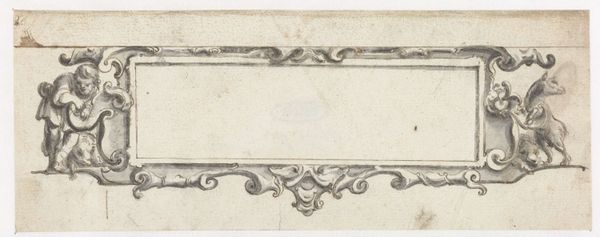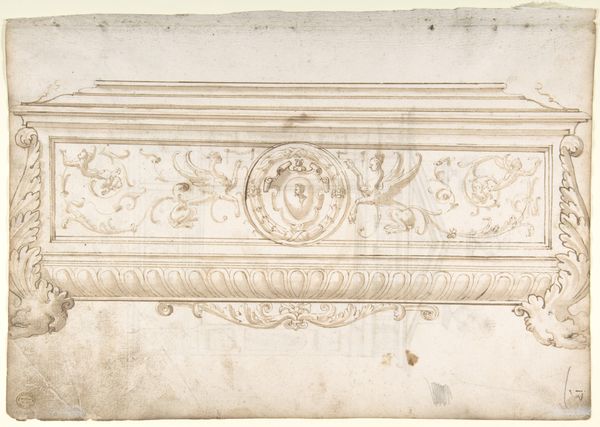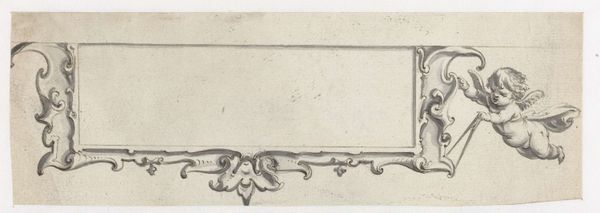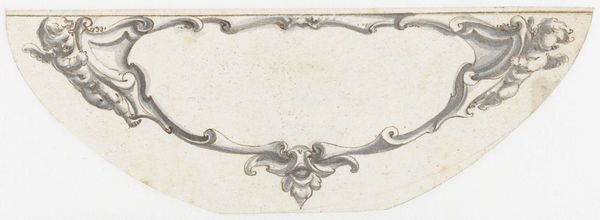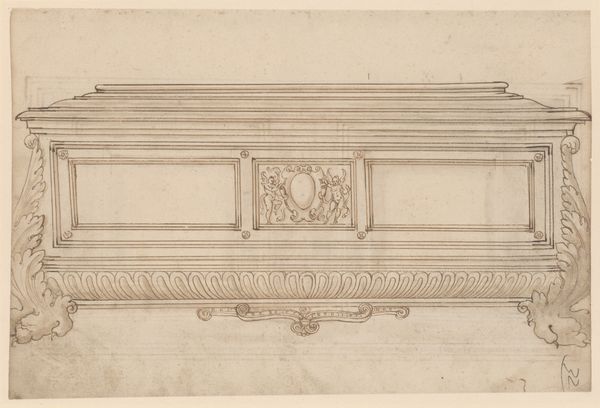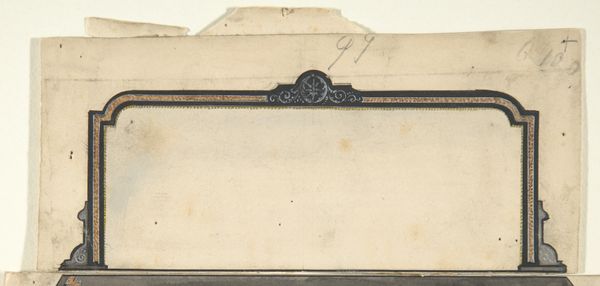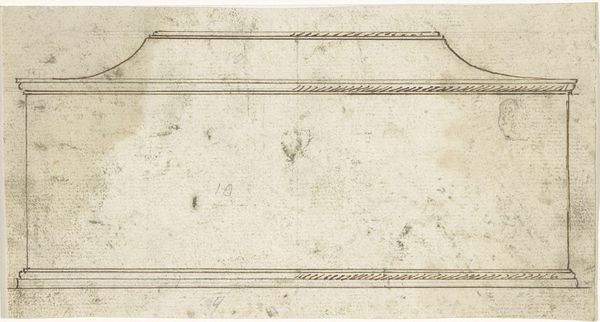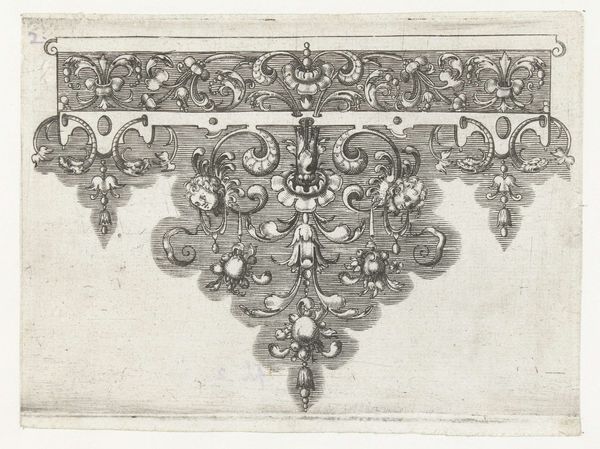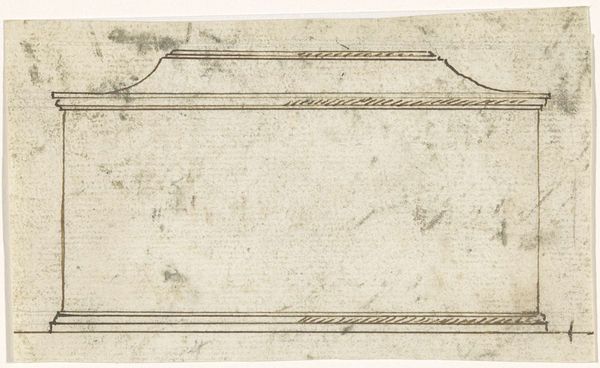
drawing, pencil
#
pencil drawn
#
drawing
#
allegory
#
baroque
#
pencil sketch
#
figuration
#
11_renaissance
#
pencil drawing
#
pencil
Dimensions: height 35 mm, width 113 mm
Copyright: Rijks Museum: Open Domain
Curator: We're looking at a pencil drawing titled "Cartouche met twee putti" by Pieter Jansz, made sometime between 1630 and 1672, placing it firmly in the Baroque period. Editor: My first thought? It looks unfinished, like a fragment of something larger. I see potential more than completion. The putti feel… tacked on, almost, like decorative trim on a blank signboard. Curator: Precisely! It's fascinating to consider its purpose. These cartouches, decorative frames, were often used for inscriptions or coats of arms. It seems this was a preparatory sketch, a material object intended to shape social and cultural rituals, for another final product. Think about the artist sitting with a pencil working it out for presentation. Editor: I am stuck thinking about labor here. Was it common practice to render designs like this on paper versus directly onto, say, wood or stone? How much were draftsmen paid relative to the folks actually carving or painting? There is a production hierarchy and the power inherent in its labor practices on display. Curator: Perhaps it was this type of design practice and object that helped usher in the status of "artist." Jansz's vision and hand is prioritized through a medium traditionally seen as separate, like, less craft-based or manual, from what may come of it. The beauty, and yes, the emotional heft, lies in that initial spark of creation, unfettered as it appears. Those little angels... there is such sensitivity to their form. The potential narrative dances around that central emptiness. Editor: See, I feel a tension. Baroque, yes, all flourish, but the drawing itself looks rather utilitarian. The stark contrast reveals, even anticipates, its end goal of material embellishment in service of capital "A" Art or at least an elite project that’s meant to last and inspire across generations of patronage and consumerism. I find it… almost heartbreaking. Curator: Well, whether heartbreaking or heartening, Pieter Jansz. certainly offers a potent reminder that even in the smallest sketch, universes of ideas can be contained. Editor: Indeed. From initial concept to final execution, the journey of this drawing mirrors broader societal structures, a testament to the artist's hand but also to the systems in which art and value are embedded.
Comments
No comments
Be the first to comment and join the conversation on the ultimate creative platform.
